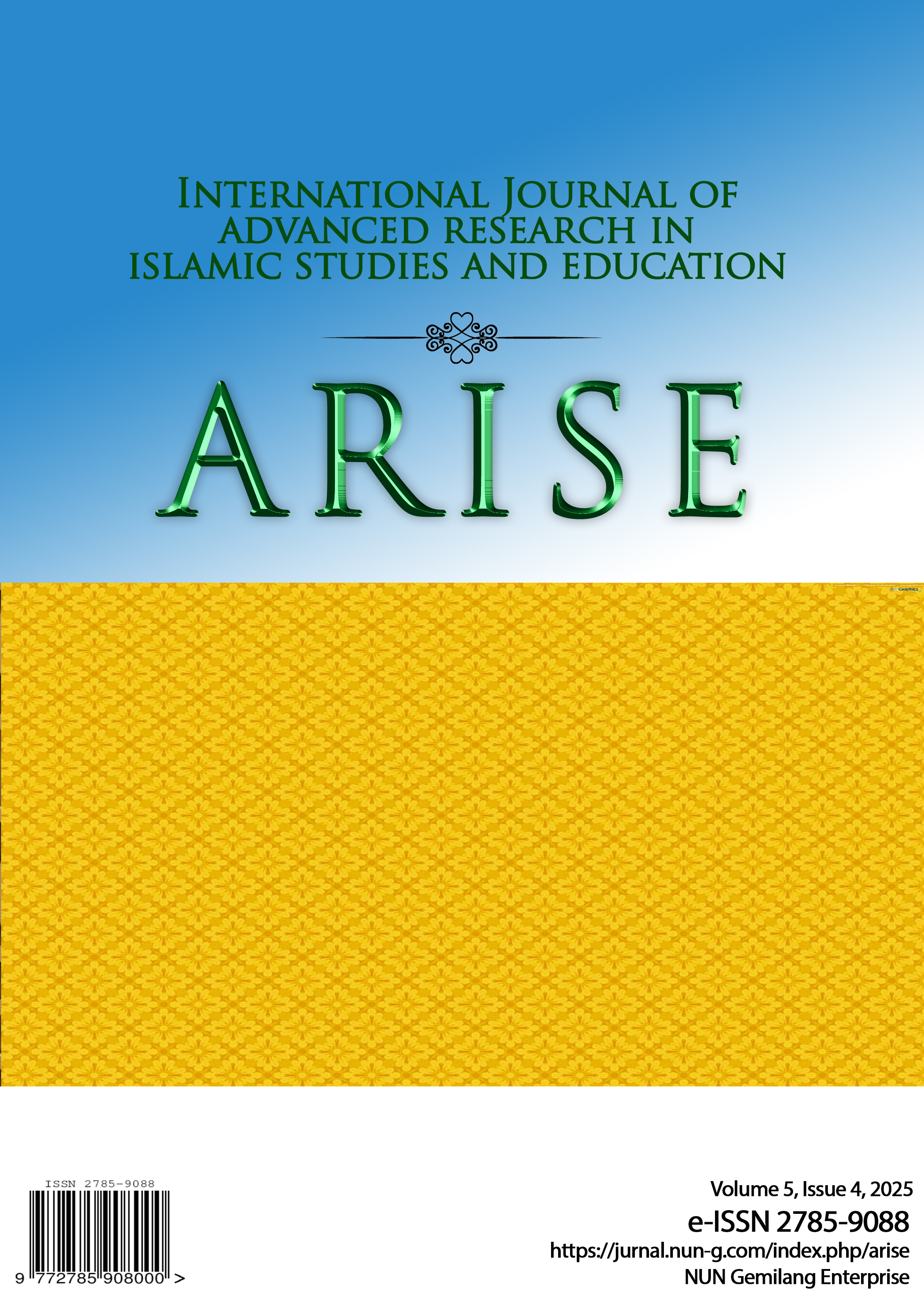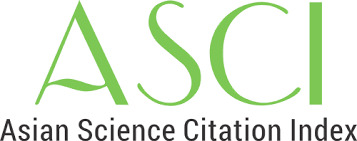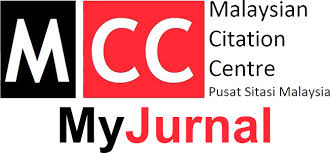PERSEPSI GURU TERHADAP PENGGUNAAN CHATGPT DALAM PENGAJARAN DI PERINGKAT SEKOLAH RENDAH [TEACHERS’ PERCEPTIONS TOWARDS THE USE OF CHATGPT IN TEACHING OF PRIMARY SCHOOL]
Keywords:
Persepsi, penerimaan, ChatGPT, Tanggapan Kebergunaan, Tanggapan Mudah Diguna, pengajaran, sekolah rendah, TAM, Perception, acceptance, ChatGPT, Perceived Usefulness, Perceived Ease of Use, Teaching, Primary School, TAMAbstract
Abstrak Kajian ini bertujuan untuk menilai tahap persepsi, penerimaan, serta hubungan antara Tanggapan Kebergunaan (Perceived Usefulness – PU) dan Tanggapan Mudah Diguna (Perceived Ease of Use – PEOU) aplikasi ChatGPT dengan penerimaan penggunaannya dalam pengajaran oleh guru sekolah rendah. Reka bentuk kajian ini menggunakan kaedah kuantitatif melalui soal selidik berstruktur yang diedarkan kepada guru sekolah rendah. Analisis data dijalankan menggunakan Perisian Statistik SPSS bagi mendapatkan nilai min, sisihan piawai, dan analisis Korelasi Pearson. Dapatan kajian menunjukkan bahawa tahap persepsi guru terhadap PU (min = 4.02, sisihan piawai = 0.671) dan PEOU (min = 4.05, sisihan piawai = 0.718) berada pada tahap memuaskan. Tahap penerimaan keseluruhan aplikasi ChatGPT dalam pengajaran juga mencatat min = 4.01 (sisihan piawai = 0.705), yang menggambarkan sikap positif, niat untuk menggunakan, dan amalan penggunaan sebenar dalam pengajaran walaupun masih terdapat ruang untuk peningkatan. Analisis Korelasi Pearson mendapati wujud hubungan positif tinggi yang signifikan antara PU dengan penerimaan (r = 0.839, p < 0.01) dan antara PEOU dengan penerimaan (r = 0.833, p < 0.01). Dapatan ini selari dengan Model Penerimaan Teknologi (TAM) yang menyatakan bahawa keberkesanan dan kemudahan penggunaan adalah faktor utama yang mempengaruhi penerimaan teknologi dalam pendidikan. Secara keseluruhan, kajian ini menyimpulkan bahawa persepsi positif guru terhadap keberkesanan dan kemudahan penggunaan ChatGPT menjadi pemacu utama kepada penerimaannya dalam pengajaran. Implikasi kajian mencadangkan agar latihan, pendedahan berterusan, dan sokongan teknikal diberikan bagi mengoptimumkan penggunaan ChatGPT sebagai alat bantu pedagogi, sekali gus meningkatkan kualiti pengajaran di sekolah rendah.
Abstract: This study aims to assess the level of perception, acceptance, and the relationship between Perceived Usefulness (PU) and Perceived Ease of Use (PEOU) of the ChatGPT application with its acceptance in teaching among primary school teachers. The research employed a quantitative design through a structured questionnaire distributed to primary school teachers. Data analysis was conducted using SPSS software to obtain mean scores, standard deviations, and Pearson correlation coefficients. The findings revealed that teachers’ perceptions towards PU (mean = 4.02, SD = 0.671) and PEOU (mean = 4.05, SD = 0.718) were at a satisfactory level. Overall acceptance of ChatGPT in teaching recorded a mean score of 4.01 (SD = 0.705), indicating a positive attitude, intention to use, and actual usage in teaching, although there is still room for improvement. Pearson correlation analysis indicated a strong and significant positive relationship between PU and acceptance (r = 0.839, p < 0.01) and between PEOU and acceptance (r = 0.833, p < 0.01). These findings are consistent with the Technology Acceptance Model (TAM), which posits that usefulness and ease of use are key factors influencing technology adoption in education. Overall, the study concludes that teachers’ positive perceptions of the effectiveness and ease of use of ChatGPT are key drivers of its acceptance in teaching. The study recommends providing continuous training, exposure, and technical support to optimise the use of ChatGPT as a pedagogical tool, thereby enhancing the quality of teaching in primary schools.
References
Abu Saleh Musa Miah, Md Shafiul Alam, Md Zubair Anik & Md. Zakir Hossain. 2024. ChatGPT in research and education: Exploring benefits and threats. arXiv preprint arXiv:2411.02816. https://arxiv.org/abs/2411.02816.
Akram, H., Abdelrady, A. H., Al Adwan, A. S., & Ramzan, M. 2022. Teachers’ perceptions of technology integration in teaching–learning practices: A systematic review. Frontiers in Psychology.
Alshahrani, A., & Aljazzar, A. 2023. Teachers’ perceptions of ChatGPT and ethical considerations in educational contexts. International Journal of Educational Technology in Higher Education, 20(1): 1–15.
Charles Sturt University Library Guides. (2025, June 17). What is a survey? [Designing surveys]. Charles Sturt University. (CSU Library Guides).
Chiu, C. M., & Wang, E. T. G. 2008. Understanding web-based learning continuance intention: The role of subjective task value. Information & Management, 45(3): 194–201. https://doi.org/10.1016/j.im.2008.02.003
Davis, F. D. 1989. Perceived usefulness, perceived ease of use, and user acceptance of information technology. MIS Quarterly, 13(3): 319–340. https://doi.org/10.2307/249008
Dillman, D. A., Smyth, J. D., & Christian, L. M. 2014. Internet, phone, mail, and mixed-mode surveys: The tailored design method (4th ed.). Wiley.
Eric, C. K. C. & Wang, T. C. 2023. Leading digital transformation and eliminating barriers for teachers to incorporate artificial intelligence in basic education in Hong Kong. Computers and Education: Artificial Intelligence. 5.
Filiz, O., Kaya, M. H., & Adiguzel, T. 2025. Teachers and AI: Understanding the factors influencing AI integration in K-12 education. Education and Information Technologies. https://doi.org/10.1007/s10639-025-13463-2 (Avesis, SpringerLink)
Holmes, W., Bialik, M., & Fadel, C. (2022). Artificial intelligence in education: Promises and implications for teaching and learning. Center for Curriculum Redesign.
Kasneci, E., Sessler, K., Küchenhoff, H., Bannert, M., & Moltmann, A. 2023. ChatGPT in education: A systematic review of benefits, limitations, and ethical concerns. Educational Technology Research and Development, 71: 1–23. https://doi.org/10.1007/s11423-023-10173-8.
Krejcie, R. V., & Morgan, D. W. 1970. Determining sample size for research activities. Educational and Psychological Measurement, 30(3): 607–610. https://doi.org/10.1177/001316447003000308.
Lee, Y. J. & Davis, R. 2024. Korean in-service teachers' perceptions of implementing artificial intelligence (AI) education for teaching in schools and their AI teacher 119 Copyright © 2024 ASIAN SCHOLARS NETWORK - All rights reserved
Lou, Y. 2023. Exploring the application of ChatGPT to English teaching in a Malaysia primary school. Journal of Advanced Research in Education, 2(4): 47–54.
Najah, A. N., Abukari, M. A., Tindan, T. N., Agyei, P., Gonyalug, I. Z. & Mensah, J. D. 2023. Chemistry teachers’ knowledge of teaching and assessment of senior high school students. East African Journal of Education Studies. 6(3): 71-84.
Rana, J., Gutierrez, P. L., & Oldroyd, J. C. 2022. Quantitative methods. In A. Farazmand (Ed.), Global Encyclopedia of Public Administration, Public Policy, and Governance (pp. 11202–11207). Springer. https://doi.org/10.1007/978-3-030-66252-3_460 (DOI, ResearchGate).
Salbihana, S., Saleh, N. S., & Ahmad, R. 2024. Persepsi Bakal Guru terhadap Penggunaan Artificial Intelligence (AI) dalam Pendidikan. International Journal of Education, Research and Advanced Practice, 3(1): 22–30. Dicapai daripada https://ijerap.com/index.php/ijerap/article/view/27.
Teo, T. 2011. Factors influencing teachers’ intention to use technology: Model development and test. Computers & Education, 57(4): 2432–2440. https://doi.org/10.1016/j.compedu.2011.06.008.
Ting, S. H., & Norman, H. (2024). Perception of Teachers in Adopting AI in the Malaysian Classroom. Jurnal Pendidikan Bitara UPSI, 17(1), 1–15. Dicapai daripada https://ojs.upsi.edu.my/index.php/JPB/article/view/10487.
Tumiran, M. A., Abidin, M. J. Z., Jamaluddin, S., & Zainuddin, M. N. 2024. Potensi Kecerdasan Buatan (AI) dalam Sistem Pendidikan di Malaysia: Analisis Kandungan. Quantum Journal of Social Sciences and Humanities, 5(1): 45–60. Dicapai daripada https://www.qjssh.com/index.php/qjssh/article/view/638.
Venkatesh, V., & Davis, F. D. 2000. A theoretical extension of the technology acceptance model: Four longitudinal field studies. Management Science, 46(2): 186–204. https://doi.org/10.1287/mnsc.46.2.186.11926.
Yusof, N., Jalil, H., & Ahmad, N. 2022. Challenges in integrating digital technologies in Malaysian primary schools: A qualitative study. Malaysian Online Journal of Educational Technology, 10(1): 45–58. https://doi.org/10.52380/mojet.2022.10.1.295.
Zhai, X. 2023. Artificial intelligence in education: Opportunities and challenges of ChatGPT in the classroom. Education and Information Technologies, 28(2): 1241–1260. https://doi.org/10.1007/s10639-022-11402-w.
Zhang, C., Schießl, J., Plößl, L., Hofmann, F. & Gläser-Zikuda, M. 2023. Acceptance of artificial intelligence among pre-service teachers: A multigroup analysis. International Journal of Educational Technology in Higher Education, 20-49.













